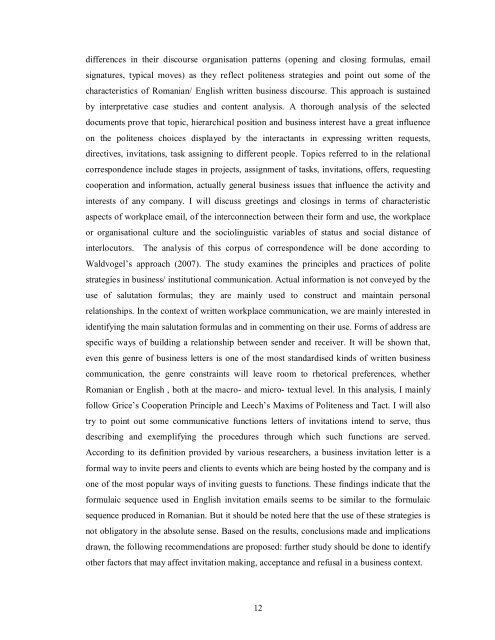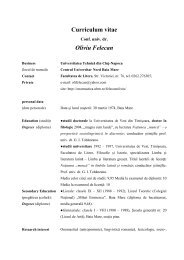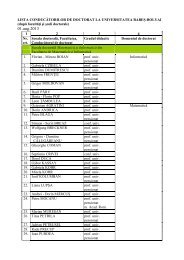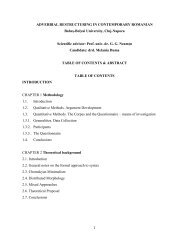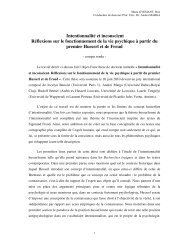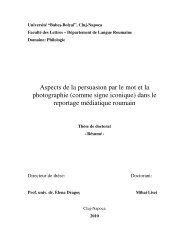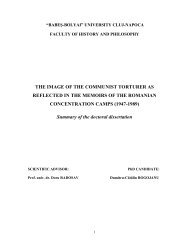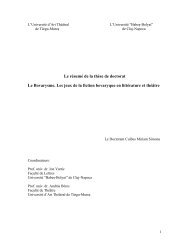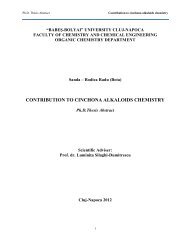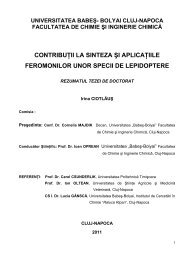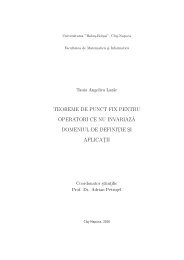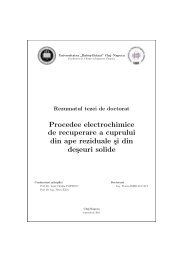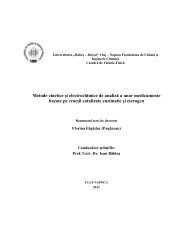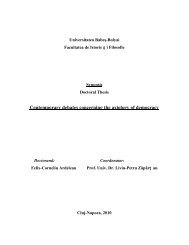1 UNIVERSITATEA “BABES –BOLYAI” CLUJ-NAPOCA ...
1 UNIVERSITATEA “BABES –BOLYAI” CLUJ-NAPOCA ...
1 UNIVERSITATEA “BABES –BOLYAI” CLUJ-NAPOCA ...
Create successful ePaper yourself
Turn your PDF publications into a flip-book with our unique Google optimized e-Paper software.
differences in their discourse organisation patterns (opening and closing formulas, email<br />
signatures, typical moves) as they reflect politeness strategies and point out some of the<br />
characteristics of Romanian/ English written business discourse. This approach is sustained<br />
by interpretative case studies and content analysis. A thorough analysis of the selected<br />
documents prove that topic, hierarchical position and business interest have a great influence<br />
on the politeness choices displayed by the interactants in expressing written requests,<br />
directives, invitations, task assigning to different people. Topics referred to in the relational<br />
correspondence include stages in projects, assignment of tasks, invitations, offers, requesting<br />
cooperation and information, actually general business issues that influence the activity and<br />
interests of any company. I will discuss greetings and closings in terms of characteristic<br />
aspects of workplace email, of the interconnection between their form and use, the workplace<br />
or organisational culture and the sociolinguistic variables of status and social distance of<br />
interlocutors. The analysis of this corpus of correspondence will be done according to<br />
Waldvogels approach (2007). The study examines the principles and practices of polite<br />
strategies in business/ institutional communication. Actual information is not conveyed by the<br />
use of salutation formulas; they are mainly used to construct and maintain personal<br />
relationships. In the context of written workplace communication, we are mainly interested in<br />
identifying the main salutation formulas and in commenting on their use. Forms of address are<br />
specific ways of building a relationship between sender and receiver. It will be shown that,<br />
even this genre of business letters is one of the most standardised kinds of written business<br />
communication, the genre constraints will leave room to rhetorical preferences, whether<br />
Romanian or English , both at the macro- and micro- textual level. In this analysis, I mainly<br />
follow Grices Cooperation Principle and Leechs Maxims of Politeness and Tact. I will also<br />
try to point out some communicative functions letters of invitations intend to serve, thus<br />
describing and exemplifying the procedures through which such functions are served.<br />
According to its definition provided by various researchers, a business invitation letter is a<br />
formal way to invite peers and clients to events which are being hosted by the company and is<br />
one of the most popular ways of inviting guests to functions. These findings indicate that the<br />
formulaic sequence used in English invitation emails seems to be similar to the formulaic<br />
sequence produced in Romanian. But it should be noted here that the use of these strategies is<br />
not obligatory in the absolute sense. Based on the results, conclusions made and implications<br />
drawn, the following recommendations are proposed: further study should be done to identify<br />
other factors that may affect invitation making, acceptance and refusal in a business context.<br />
12


